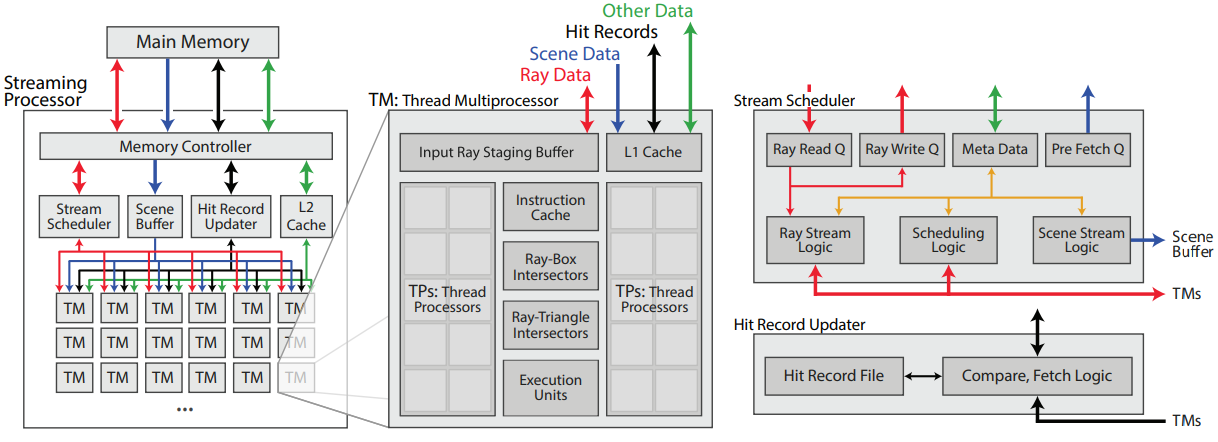Dual Streaming for Hardware-Accelerated Ray Tracing
Konstantin Shkurko, Tim Grant, Daniel Kopta, Ian Mallett, Cem Yuksel, and Erik Brunvand
In High Performance Graphics (HPG), 2017

Abstract
Hardware acceleration for ray tracing has been a topic of great interest in computer graphics. However, even with proposed custom hardware, the inherent irregularity in the memory access pattern of ray tracing has limited its performance, compared with rasterization on commercial GPUs. We provide a different approach to hardware-accelerated ray tracing, beginning with modifying the order of rendering operations, inspired by the streaming character of rasterization. Our dual streaming approach organizes the memory access of ray tracing into two predictable data streams. The predictability of these streams allows perfect prefetching and makes the memory access pattern an excellent match for the behavior of DRAM memory systems. By reformulating ray tracing as fully predictable streams of rays and of geometry we alleviate many long-standing problems of high-performance ray tracing and expose new opportunities for future research. Therefore, we also include extensive discussions of potential avenues for future research aimed at improving the performance of hardware-accelerated ray tracing using dual streaming.
BibTeX
@inproceedings{Shkurko:2017:DSHWRT,
author = {Konstantin Shkurko and Tim Grant and Daniel Kopta and Ian Mallett and Cem Yuksel and Erik Brunvand},
title = {Dual Streaming for Hardware-Accelerated Ray Tracing},
booktitle = {High-Performance Graphics (HPG 2017)},
year = {2017},
numpages = {11},
location = {Los Angeles, CA},
isbn = {978-1-4503-5101-0/17/07},
url = {http://doi.acm.org/10.1145/3105762.3105771},
doi = {10.1145/3105762.3105771},
publisher = {ACM},
address = {New York, NY, USA},
}Acknowledgements
This material is supported in part by the National Science Foundation under Grant No. 1409129. Josef Spjut and Elena Vasiou provided helpful feedback. Fairy Forest is from the University of Utah, Crytek Sponza is from Frank Meinl at Crytek and Marko Dabrovic, Dragon is from the Stanford Computer Graphics Laboratory, Vegetation and Hairball are from Samuli Laine, and San Miguel is from Guillermo Leal Laguno. Cem Yuksel combined Sponza atrium by Marko Dabrovic with the Stanford Dragon for Dragon Sponza.